#Frédéric Andréi
Explore tagged Tumblr posts
Text


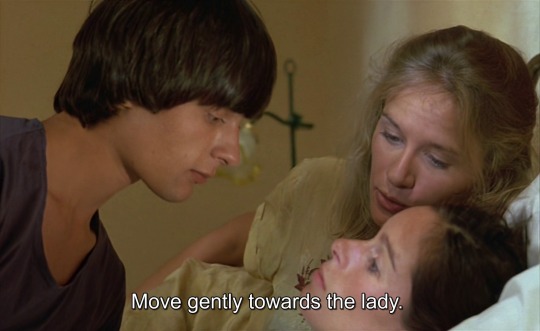
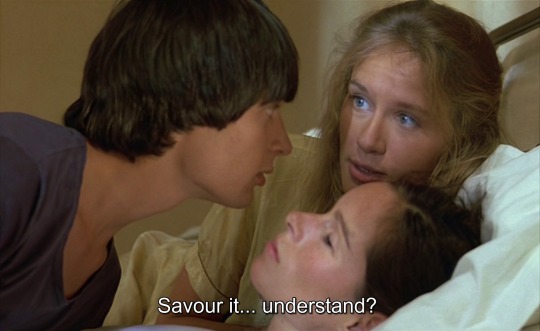

Le voyage en douce (AKA A Sweet Journey) | Michel Deville | 1980
Frédéric Andréi, Dominique Sanda, Geraldine Chaplin
#Frédéric Andréi#Dominique Sanda#Geraldine Chaplin#Michel Deville#Le voyage en douce#1980#Sweet Journey
38 notes
·
View notes
Text






























The Facts of Life Goes to Paris - NBC - September 25, 1982
Comedy
Running Time: 100 minutes
Stars:
Charlotte Rae as Edna Garrett
Lisa Whelchel as Blair Warner
Mindy Cohn as Natalie Green
Kim Fields as Tootie Ramsey
Nancy McKeon as Jo Polniaczek
Frank Bonner as Garth Kiley
Frédéric Andréi as David LeClair
Jacques Ferrière as Pierre Petit
Vivian Brown as Miss Southwick
Roger Til as Chef Antoine
Caroline Ducrocq as Angelique
Laurie Main as Reggie
Bernard Soufflet as The Innkeeper
#The Facts of Life Goes to Paris#TV#NBC#Comedy#1982#Charlotte Rae#Lisa Whelchel#Mindy Cohn#Kim Fields#Nancy McKeon
6 notes
·
View notes
Photo

Diva,
1981, Dir. Jean-Jacques Beineix
With Wilhelmenia Fernandez, Frédéric Andréi and Richard Bohringer 117min, 35mm
Two tapes, two Parisian mob killers, one corrupt policeman, an opera fan, a teenage thief, and the coolest philosopher ever filmed. All these characters weave their way through this intricate and stylish cult-classic French-language thriller.
36 notes
·
View notes
Photo




Sogar Filme aus den 80ern sind inzwischen 40 Jahre alt. Diva sieht immer noch, und insbesondere für einen Film aus den 80ern, unverschämt gut aus. In einem minimal informativeren, älteren Beitrag hier äußere ich bereits dieselbe Verwunderung anläßlich 35 Jahren.
#Diva#Wilhelmenia Fernandez#Frédéric Andréi#Richard Bohringer#Thuy An Luu#Dominique Pinon#Film gesehen#Jean-Jacques Beineix#Der französische Film der Woche
0 notes
Photo





Diva (1981), dir. by Jean-Jacques Beineix
#diva#1980s#80s#jean-jacques beineix#frédéric andréi#wilhelmenia wiggins fernandez#roland bertin#richard bohringer#thuy an luu#dominique pinon#diva 1981#diva movie
81 notes
·
View notes
Photo

DIVA - 1981 - after the novel by Delacorta
Director: Jean-Jacques Beineix
Music: Vladimir Cosma
Cast:
Cynthia Hawkins as Wilhelmenia Wiggins Fernandez Frédéric Andréi as Jules Richard Bohringer as Serge Gorodish Thuy An Luu as Alba Jacques Fabbri as Commissaire Jean Saporta Chantal Deruaz as Nadia Kalanski Anny Romand as Paula Roland Bertin as Simon Weinstadt Gérard Darmon as L' Antillais Dominique Pinon as Le curé Patrick Floersheim as Zatopek
Two tapes, two Parisian mob killers, one corrupt policeman, an opera fan, a teenage thief, a cool philosopher . . . and a chase scene to rival that in the French Connection. And can you guess what Le curé (Dominique Pinon) listens to all the time?
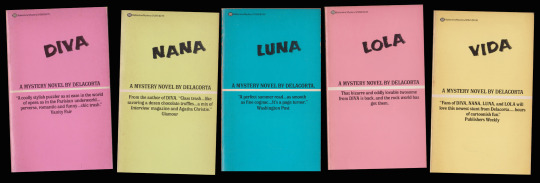
Delacorta novels in the series
13 notes
·
View notes
Text
Film #706: ‘Diva’, dir. Jean-Jacques Beineix, 1981.
In a dream, I imagine being an actor in Diva.
For most of my filmwatching career I've at least been able to determine what I like or dislike about a film. In the case of Jean-Jacques Beineix's Diva, I'm at a bit of a loss. The very things that I think are compelling about the film are the same things that absolutely infuriated me while watching it. It's a film of sensations rather than coherence, which is appealing, but that doesn't mean that all of those sensations are pleasurable. It abandons the logical progression of events, which makes for some giddy, edge-of-rationality storytelling, but it also ignores some logical progressions that would make the film more interesting. It is steadfastly unorthodox and doesn't seem to mind that that is a contradiction in terms. It's also a French film from the early 1980s, which means that there are a lot of bare breasts, just for the sake of it.

This complete disavowal of traditional film structure raised a few hackles at the time of the film's release as well. As best I can determine, Diva is on the list because it's a great example of what was termed 'cinéma du look' by Raphael Bassan: a loose collection of films by directors including Beineix and Luc Besson that prioritised style over the realist tradition that preceded it in French cinema. Diva received a mediocre reception in France until the film became particularly popular in the United States, at which point it received stronger praise in its home country. What's particularly interesting about this to me is that it demonstrates the vast gulf that can exist between the audience and the theory. 'Cinéma du look' was originally intended as a pejorative term; an insult against these overly populist films which had abandoned their respect for their realist ancestors.
How does something like this happen? Most of the time, if a collection of films gains a term (especially in French, and especially a French abstract term), it will be considered as a functional movement, even if that term starts life as an insult. Once you label something, you can find connections. The term features in Empire and Contemporary French Cinema without any reference to the term's origins, drawing attention to the malaise that set in under Mitterrand's regime, and proposing that this explains the movement's focus on political disillusionment, fatalism, and an anti-police, anti-familial rhetoric. All of this, though, is tangential to the actual experience of watching one of these films, so let's turn to Diva itself.
Beineix took some time to settle into his feature-film career. Diva was his first full-length picture, and he hopped around various genres before settling into the documentary format, where he stayed for most of the 1990s. At times his films hearken back to Diva, though, returning to the slick crime caper genre. In Diva, a Parisian postal worker (Frédéric Andréi) makes a bootleg recording of an opera singer he adores (Wilhemenia Fernandez), who has been vociferously opposed to having her voice recorded (my partner, half-watching this film with me, said "She's clearly not very good at her job, then, if she's never heard herself sing," and I have to agree with that on a logical level, but the film clearly doesn't mind). The existence of this bootleg recording is noted by two Taiwanese record executives (and possible gangsters), who trick the soprano into believing they have the recording to blackmail her into signing an exclusive recording contract with them. Mistakenly believing that this is the only incriminating recording he possesses, the postal worker, Jules, believes that all the surveillance and threats he is the victim of are coming from the Taiwanese men. However, at the very beginning of the film, a key witness to a criminal prostitution ring drops her taped testimony into the pannier of Jules' moped. This is our secondary crime plot which, as is typical for the caper film, is of much greater importance to everyone except the protagonist. The police officers investigating the witness's murder are trying to locate Jules to retrieve the evidence, as are the hitmen who murdered the witness, but Jules chalks all this behaviour up to the one recording he knows he possesses.
...Actually, it's all a bit more complicated than this. Jules knows he has the witness testimony tape; he handles it several times. Yet despite being in possession of a mysterious audio cassette, and living surrounded by sound equipment, it takes him a maddeningly long time to even consider playing it. It happens at roughly the right point in the film's plot, but forty minutes too late to be believable.
Anyhow, Jules falls in with a bohemian - and probable pimp - Gorodish (Richard Bohringer, suitably menacing) and his muse Alba (Thuy An Luu, pixieish), and Gorodish pieces everything together, rescues Jules from his plight, and machinates the deaths of the record executives/gangsters, the hitmen, and the leader of the prostitution ring. Despite recording her against her wishes, almost ruining her livelihood, and not acknowledging any of this when he could, Jules and the soprano finally fall in love.

Written out like this, the film sounds kind of stupid. But it's made out of some absolutely pristine parts which are often all the more appealing when they don't make sense. The film is a kind of collage of things that the director and his audience clearly found 'cool', with no apologies made for their inability to gel into a cohesive whole. In fact, doing so would likely make the film much less vibrant. Jules appears to live in a disused Planet Hollywood at the top of a car park building; when his home is ransacked it is left festooned with unraveled audiotape in a way that cannot have occurred naturally. Gorodish and Alba's apartment is a large room with no interior walls, like a contemporary art gallery, where Gorodish completes a large jigsaw puzzle on the floor and everything is blue. Discordant electronic music plays at a high volume everywhere, and it seems like Beineix is more concerned about the sonic textures of Paris rather above all else. Variety in colour is robbed from scenes, creating a gorgeous but artificial uniform scheme, but the sound is frequently jarring, in contrast to the beautiful performances of opera.
Wilhelmenia Fernandez is the film's greatest find as a musician, even though she is clearly not a comfortable actor. Her opening performance, which Jules records, is masterful and time does seem to hang still in the air for the duration. This is the most still the film will get, and much has been made about the most memorable sequence in the middle of the film, a fast-paced chase between Jules on his moped and one of the police detectives trying to catch him. The implausibilities of the sequence add to it: the detective is able to run almost as fast as Jules on the moped, despite shots showing Jules motoring at speed by himself. Either the detective is supernaturally fast, or Jules is appallingly slow on his moped, but rather than doing the obvious thing and ditching the vehicle, Beineix keeps it to make the chase far more interesting than it would be otherwise.

It's the most infuriating thing, really: I should be able to put my desire for narrative cohesiveness on hold for two hours. This film has a plot, certainly, but it doesn't seem to care enough about it to treat it seriously. On the flipside of that, it also doesn't have a strong commitment to being funny. It winds up being somewhere in the middle, enough to earn the slightly hostile bemusement of the French film criticism apparatus.What I think I wanted from this film was a clear reason to stick with it in the face of its failings, and Diva didn't provide me with that. Why doesn't Jules listen to the tape earlier? It would reveal the answer to a major mystery much earlier, certainly, but with the right treatment that could serve to make the plot more interesting and convoluted, rather than less. Why not explain more explicitly Jule's reluctance to tell the opera singer that he has the recording, and that her career is not in any significant danger? It would, again, remove something from the script that currently serves as a major catalyst for 'things happening', but stripping out the weaker elements and replacing them with stronger ones would only be a benefit to the film.
The answer, of course, is that Beineix doesn't really care how weak the plot is. American critics in higher publications admired this break from traditional narratives, having an almost meditative experience in the midst of these slightly alienating soundscapes and colour fields. Despite this, I'd argue that if you're making a film with some fantastic setpieces, stylistic choices and an embrace of the merging of highbrow and lowbrow, that you would want to show these elements to their best advantage. Beineix has assembled some great stuff, but without the care or the resulting satisfaction.

In a dream, I imagine being an actor in Diva. I want to know my motivation. I want to know why things are happening in a language I am not fluent in; why I should respond in a certain way and why I don't respond in ways that seem obvious. Jean-Jacques Beineix looks at me from behind the camera when I ask why my bath is in the middle of my wide-open apartment. "C'est cool," he says, simply. "C'est radical, c'est vulgar."
8 notes
·
View notes
Text

Richard Bohringer and Frédéric Andréi
"le couteau, mince mais pas trop"
Diva, 1981
3 notes
·
View notes
Text
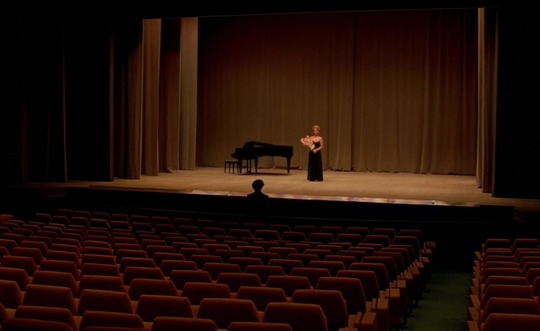
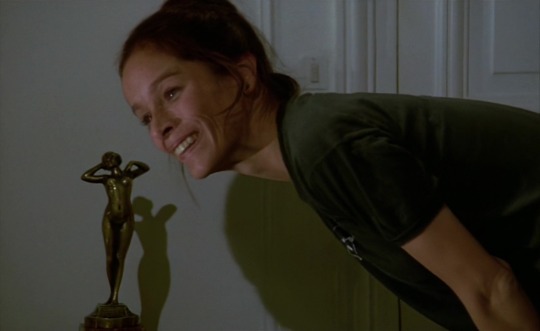
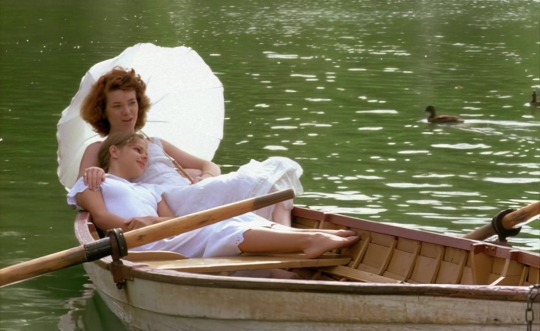
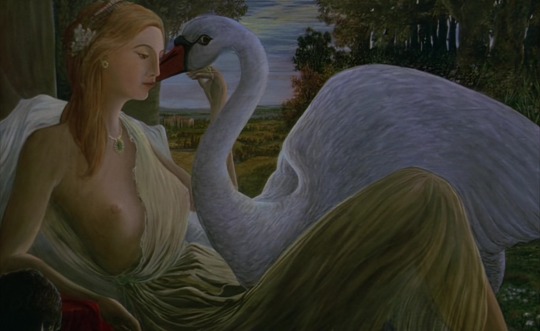





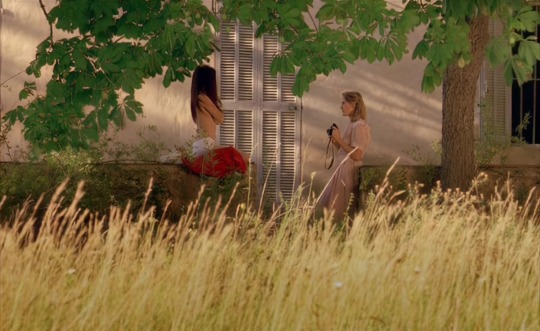

Le voyage en douce (AKA A Sweet Journey) | Michel Deville | 1980
#Michel Deville#Le voyage en douce#1980#Sweet Journey#Dominique Sanda#Geraldine Chaplin#Valerie Masterson#André Marcon#Marion Gautier#Frédéric Andréi#Myriam Roulet#Cécile Le Bailly
38 notes
·
View notes
Text



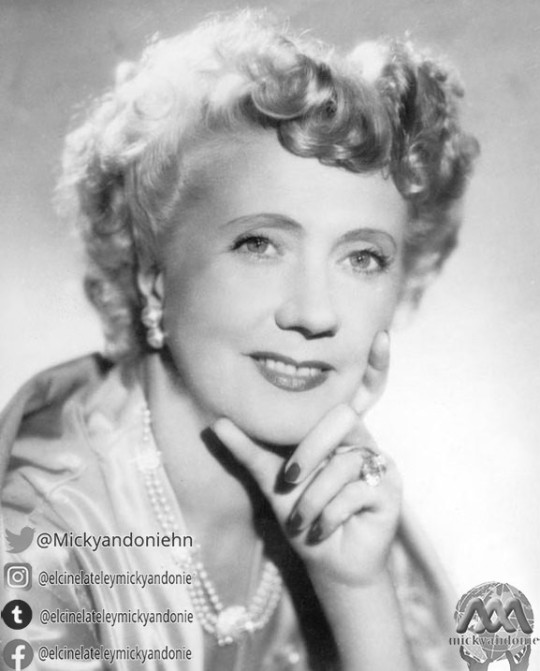
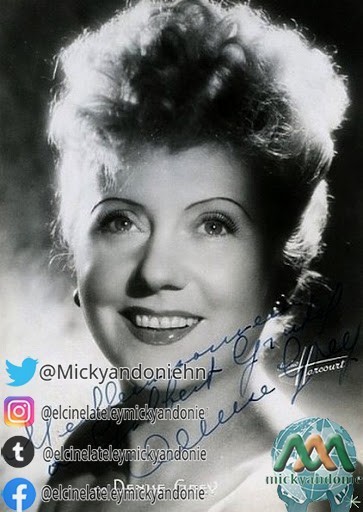


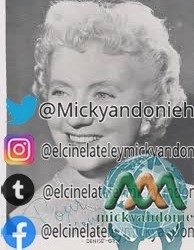

Denise Grey.
Filmografía
Cine
1913 : Mademoiselle Etchiko
1914 : En famille, de Georges Monca
1914 : Madame Rigadin, modiste, de Georges Monca
1914 : Mademoiselle Etchiko, de André Hugon
1914 : Le Voyage de Corbillon, de Georges Monca
1916 : Document secret, de René Navarre
1916 : Nemrod et Cie, de Maurice Mariaud
1916 : Rigadin professeur de danse, de Georges Monca
1917 : Les Bleus de l'amour, de Henri Desfontaines
1917 : Honneur d'artiste, de Jean Kemm
1935 : Jeunes Filles à marier, de Jean Vallée
1936 : La Dame de Vittel, de Roger Goupillières
1937 : Trois artilleurs au pensionnat, de René Pujol
1938 : Trois artilleurs à l'opéra, de André Chotin
1938 : Serge Panine, de Paul Schiller y Charles Méré
1940 : Monsieur Hector, de Maurice Cammage
1941 : Boléro, de Jean Boyer
1941 : Montmartre-sur-Seine, de Georges Lacombe
1942 : Romance à trois, de Roger Richebé
1942 : Le Voile bleu, de Jean Stelli
1942 : Des jeunes filles dans la nuit, de René Le Hénaff
1942 : Retour de flamme, de Henri Fescourt
1942 : L'Honorable Catherine, de Marcel L'Herbier
1943 : Adieu Léonard, de Pierre Prévert
1943 : Vingt-cinq ans de bonheur, de René Jayet
1943 : L'aventure est au coin de la rue, de Jacques Daniel-Norman
1944 : Les Caves du Majestic, de Richard Pottier
1945 : On demande un ménage, de Maurice Cam
1945 : Madame et son flirt de Jean de Marguenat
1945 : L'Insaisissable Frédéric, de Richard Pottier
1945 : L'Extravagante Mission, de Henri Calef
1946 : Étrange Destin, de Louis Cuny
1946 : Le Couple idéal, de Bernard Roland y Raymond Rouleau
1946 : Six heures à perdre, de Alex Joffé y Jean Lévitte
1946 : Coïncidences, de Serge Debecque
1946 : Le Diable au corps, de Claude Autant-Lara
1947 : Et dix de der, de Robert Hennion
1947 : Carré de valets, de André Berthomieu
1948 : Une femme par jour, de Jean Boyer
1948 : Bonheur en location, de Jean Wall
1949 : La Ronde des heures, de Alexandre Ryder
1949 : Tête blonde, de Maurice Cam
1949 : Mon ami Sainfoin, de Marc-Gilbert Sauvajon
1949 : Pas de week-end pour notre amour, de Pierre Montazel
1950 : Rome-Express, de Christian Stengel
1950 : Les Petites Cardinal, de Gilles Grangier
1950 : Demain nous divorçons, de Louis Cuny
1952 : Allô... je t'aime.
1952 : La Tournée des grands ducs, de André Pellenc
1953 : Art. 519 Codice Penale, de Leonardo Cortese
1953 : Il Seduttore, de Franco Rossi
1953 : Raspoutine, de Georges Combret
1953 : Dortoir des grandes, de Henri Decoin
1953 : Les Corsaires du bois de Boulogne, de Norbert Carbonnaux
1953 : Julietta, de Marc Allégret
1953 : Le Père de Mademoiselle, de Marcel L'Herbier
1954 : Escalier de service, de Carlo Rim, sketch Les Béchard
1954 : Le Printemps, l'automne et l'amour, de Gilles Grangier
1954 : Fantaisie d'un jour, de Pierre Cardinal
1954 : Le Mouton à cinq pattes, de Henri Verneuil
1954 : Poisson d'avril, de Gilles Grangier
1955 : La Villa Sans-Souci, de Maurice Labro
1955 : La Rue des bouches peintes, de Robert Vernay
1956 : Sylviane de mes nuits, de Marcel Blistène
1956 : L'Auberge fleurie, de Pierre Chevalier
1956 : Une nuit aux Baléares, de Paul Mesnier
1956 : Mitsou, de Jacqueline Audry
1957 : À pied, à cheval et en voiture, de Maurice Delbez
1957 : Carve Her Name with Pride, de Lewis Gilbert
1957 : La Peau de l'ours, de Claude Boissol
1957 : Le Tombeur, de René Delacroix
1957 : Police judiciaire, de Maurice de Canonge
1957 : Mimi Pinson, de Robert Darène
1957 : C'est la faute d'Adam, de Jacqueline Audry
1958 : À pied, à cheval et en spoutnik, de Jean Dréville
1959 : Bomben im Monte-Carlo, de Georg Jacoby
1959 : Le Confident de ces dames, de Jean Boyer
1960 : Le Panier à crabes, de Joseph Lisbona
1960 : La Française et l'Amour, de Christian-Jaque, sketch Le Divorce
1963 : La Bonne Soupe, de Robert Thomas
1965 : Pas de caviar pour tante Olga, de Jean Becker
1969 : La Maison de campagne, de Jean Girault
1970 : Hello-Goodbye, de Jean Negulesco
1970 : Los Aristogatos, de The Walt Disney Company
1971 : Mais qui donc m'a fait ce bébé ?, de Michel Gérard
1980 : La Boum, de Claude Pinoteau
1982 : La Boum 2, de Claude Pinoteau
1982 : N'oublie pas ton père au vestiaire..., de Richard Balducci
1982 : En cas de guerre mondiale, je file à l'étranger, de Jacques Ardouin
1983 : Le Voleur de feuilles, de Pierre Trabaud
1985 : Le Gaffeur, de Serge Pénard
1988 : Les Saisons du plaisir, de Jean-Pierre Mocky
1991 : Tchin tchin, de Gene Saks.
Televisión
1960 : Rouge, de André Leroux
1962 : Chéri
1967 : Le Chevalier Tempête, de Yannick Andréi
1969 : Tout pour le mieux
1971 : Une autre vie
1972 : Les Rois maudits, de Marcel Jullian y Claude Barma
1977 y 1982 : Cinéma 16
1978 : Un ours pas comme les autres
1979 : Les Moyens du bord
1979 : Les Dames de la côte, de Nina Companeez
1980 : L'Esprit de famille
1983 : Merci Sylvestre
1985 : Les temps difficiles.
Teatro
1916 : Six Hommes, une femme et un singe, de Pierre Veber y Yves Mirande, Théâtre Michel
1921 : Comédienne, de Jacques Bousquet y Paul Armont, Théâtre des Nouveautés
1922 : La Femme de mon ami, Théâtre de l'Athénée
1922 : Atout... Cœur !, de Félix Gandéra, Théâtre de l'Athénée
1924 : Si je voulais..., de Paul Géraldy y Robert Spitzer, Théâtre du Gymnase Marie-Bell
1926 : Passionnément, de Maurice Hennequin y Albert Willemetz, Théâtre de la Michodière
1936 : Europe, de Maurice Rostand, Théâtre Pigalle
1938 : Le Valet maître, de Paul Armont y Léopold Marchand, escenografía de Pierre Fresnay, Théâtre de la Michodière
1948 : Les Enfants d'Edouard, de Frederic Jackson y Roland Bottomley, adaptación de Marc-Gilbert Sauvajon, escenografía de Jean Wall, Théâtre Édouard VII
1949 : Les Enfants d'Edouard, de Frederic Jackson y Roland Bottomley, adaptación de Marc-Gilbert Sauvajon, escenografía de Jean Wall, Théâtre des Célestins
1950 : George et Margaret, de Marc-Gilbert Sauvajon y Jean Wall, escenografía de Jean Wall, Théâtre Daunou
1950 : Il faut marier maman, de Marc-Cab y Serge Veber, escenografía de Pierre Dux, Théâtre de Paris
1953 : Faites-moi confiance, de Michel Duran, escenografía de Jean Meyer, Théâtre du Gymnase Marie-Bell
1955 : Les Enfants d'Edouard, de Frederic Jackson y Roland Bottomley, adaptación de Marc-Gilbert Sauvajon, escenografía de Jean Wall, Théâtre des Célestins
1956 : La Femme du siècle, de Claude Schnerb, escenografía de Jacques-Henri Duval, Théâtre des Célestins, giras Georges Herbert
1959 : Bon Week-End Mr. Bennett, de Paule de Beaumont a partir de Arthur Watkyn, escenografía de Michel Vitold, Théâtre de la Gaîté-Montparnasse
1961 : Ocho mujeres, de Robert Thomas escenografía de Jean Le Poulai.
1962 : Ocho mujeres, de Robert Thomas, escenografía de Jean Le Poulain, Théâtre des Bouffes-Parisiens
1963 : Vénus de Milo, de Jacques Deval, escenografía de Pierre Mondy, Théâtre des Célestins
1965 : Assassins associés, de Robert Thomas, escenografía de Jean Piat, Théâtre Antoine y Théâtre du Palais-Royal
1966 : J'y suis, j'y reste, de Jean Valmy y Raymond Vincy, escenografía de Jean Valmy, Théâtre Marigny
1966 : La Fin du monde, de Sacha Guitry, escenografía de Jean-Pierre Delage, Théâtre de la Madeleine
1967 : Quarante Carats, de Pierre Barillet y Jean-Pierre Gredy, escenografía de Jacques Charon, Théâtre de la Madeleine
1971 : Le Train de l'aube, de Tennessee Williams, escenografía de Jean-Pierre Laruy, Théâtre Édouard VII
1972 : En avant... toute !, de Michel André, escenografía de Michel Roux, Théâtre Édouard VII
1972 : La Bonne Adresse, de Marc Camoletti, escenografía de Christian-Gérard, Théâtre Michel
1973 : La Royale Performance, de Marcel Mithois, escenografía de Jean-Pierre Delage, Théâtre des Bouffes-Parisiens
1974 : Le Tube, de Françoise Dorin, escenografía de François Périer, Théâtre Antoine
1976 : Le Jardin de craie, de Enid Bagnold, escenografía de Raymond Gérôme, Théâtre Hébertot
1977 : Bichon, de Jean de Létraz, escenografía de Jacques Valois, Théâtre de Charleville-Mézières
1978 : Crime à la clef, de Alain Bernier y Roger Maridat, escenografía de Jean-Paul Cisife, Théâtre Tristan-Bernard
1981 : La vie est trop courte, de André Roussin, escenografía de Michel Fagadau, Théâtre Daunou
1983 : La vie est trop courte, de André Roussin, escenografía de Michel Fagadau, Théâtre de la Gaîté-Montparnasse
1984-1985 : Les Temps difficiles, de Édouard Bourdet, escenografía de Pierre Dux, Théâtre des Variétés
1985 : Harold et Maude, de Colin Higgins, escenografía de Jean-Luc Tardieu, Espace 44 Nantes
1987 : Harold et Maude, de Colin Higgins, escenografía de Jean-Luc Tardieu, Théâtre Antoine
1989 : Arsénico y encaje antiguo, de Joseph Kesselring, escenografía de Jean-Luc Tardieu, gira
1991 : La sopera, de Robert Lamoureux, escenografía de François Joffo.
Operetas
1919 : Nelly, de Marcel Lattès, con Félix Oudart (Théâtre de la Gaîté)
1950 : Il faut marier maman, de Guy Lafarge, Théâtre de Paris, con Roland Armontel.
Créditos: Tomado de Wikipedia
https://es.wikipedia.org/wiki/Denise_Grey
#HONDURASQUEDATEENCASA
#ELCINELATELEYMICKYANDONIE
5 notes
·
View notes
Text
Οι ταινίες στην ΕΡΤ3 το Σαββατοκύριακο 6 και 7 Αυγούστου
Οι ταινίες στην ΕΡΤ3 το Σαββατοκύριακο 6 και 7 Αυγούστου
Το γνωστό θρίλερ γαλλικής παραγωγής 1981 «Ντίβα / Diva» και τη δραματική ταινία γερμανικής παραγωγής 2017, «Πώς να ξεφορτωθείς μια μαμά / Die diva, Thailand und wir!» προβάλλει η ΕΡΤ3 το Σαββατοκύριακο 6 και 7 Αυγούστου. Σάββατο 6/8, στις 22:00 «Ντίβα / Diva» Σκηνοθε��ία: Jean-Jacques Beineix Παίζουν: Wilhelmenia Fernandez, Frédéric Andréi, Richard Bohringer, Thuy An Luu. Η ταινία υπήρξε η…

View On WordPress
0 notes
Text
Brief Review: Diva (1981)
Rated the film 3 stars out of 5. Positively featuring some clear/subtle inspiration to Luc Besson for his diva character in The Fifth Element (1997), the titular character is not the main character, but the role that drives the entire plot forward. Unfortunately, it does not help that Wilhelmenia Fernandez, despite doing her own opera singing and displaying her appreciable talents in speaking two languages, delivers some questionable acting, especially compared to the other important roles in the film. Richard Bohringer creates a scene-stealing performance in a supporting role, delivering very little dialogue but masterfully providing much subtext, while Thuy An Luu (sadly exploited in too many scenes for nudity instead of her acting) and Frédéric Andréi credibly create lead characters for which one can decently sympathize, despite their actions onscreen. The true star of the film is arguably the cinematography of future Oscar winner, Philippe Rousselot. The colour saturation throughout the film, including a short yet not really “sensible for the plot” car chase, embellishes the thrilling action onscreen while the suspension of disbelief in the plot attempts to undermine it. Some late shots involving a lighthouse, though expertly framed, are overtly sexualized, but not necessarily in a way that might support the overall effect of the film, visually jarring away from the rest of the movie instead of enhancing it. A relatively recent addition to the 1001 Movies You Must See Before You Die list (as it did not appear on earlier editions), the motion picture’s inclusion on this list is a bit curious based off the overall product, emphasizing visual style over substance. Yes, others on the list can also make this claim but Diva does not quite provide a sufficient amount of the former.. Writer/director Jean-Jacques Beineix notably provides an existentialist theme throughout (which may or may not be present in the original novel), but the execution as a cinematic product seems to fall short of ultimately being a “must see” film. https://www.imdb.com/title/tt0082269/
0 notes
Text
Diva de Jean-Jacques Beineix (1981) #MrCinema 208
Redécouvrez la bande-annonce du film Diva ponctuée des secrets de tournage et d'anecdotes sur celui-ci. ■ Abonnez-vous sur Youtube ► https://goo.gl/dck70g ■ Suivez-moi sur Twitter ► https://goo.gl/IMyExb ■ Rejoignez-moi sur Facebook ► https://goo.gl/eWnGLq 🎥 Diva est un film français réalisé par Jean-Jacques Beineix, produit et sorti en France en 1981. ✎ Une grande cantatrice refuse obstinément de se laisser enregistrer. Mais un chasseur de sons va à l'encontre de sa volonté. Sa passion l'entraînera vers une impitoyable chasse à l'homme... 🎬 Fiche technique ▬▬▬▬▬▬▬▬▬ Réalisation : Jean-Jacques Beineix Scénario : Jean-Jacques Beineix et Jean Van Hamme, d'après le roman éponyme de Daniel Odier, alias Delacorta Producteurs : Irène Silberman, Serge Silberman Directeur de la photographie : Philippe Rousselot Musique originale : Vladimir Cosma Date de sortie : 11 mars 1981 ☺ Distribution ▬▬▬▬▬▬▬ Wilhelmenia Fernandez, Frédéric Andréi, Richard Bohringer, Thuy An Luu, Jacques Fabbri, Chantal Deruaz, Anny Romand, Roland Bertin, Gérard Darmon, Dominique Pinon, Jean-Jacques Moreau, Patrick Floersheim, Raymond Aquilon, Eugène Berthier, Gérard Chaillou ✎ Sources Wikipedia: http://ift.tt/2m8NReV ✎ Sources AlloCiné: http://ift.tt/1P666WN https://youtu.be/GBWkOrjsNSo
0 notes
Photo

Wilhelmenia Fernandez & Frédéric Andréi, film: Diva, directed by: Jean-Jacques Beineix
#Wilhelmenia Fernandez#Frédéric Andréi#Diva#1981#Jean-Jacques Beineix#french directors#french films#love films#romantic films#'80s#european films
7 notes
·
View notes
Video
youtube
(via https://www.youtube.com/watch?v=Lugx0xX2G54)
#Diva#Jean-Jacques Beineix#Frédéric Andréi#Richard Bohringer#Wilhelmenia Fernandez#Roland Bertin#Thuy An Luu#Daniel Odier
0 notes
Photo

No arthouse cinema repertory programme in the 1980s was complete without regular screenings of the chic French thriller Diva (1981). The plot combined opera, murder and corruption, while the visual style had the sort of pizzazz more readily associated with advertising or pop videos. By the end of the same decade, the prospect of a student bedsit that did not have on its walls the poster for the erotic love story Betty Blue (1986) was as unthinkable as one without Pot Noodle and patchouli oil. Both films were directed by Jean-Jacques Beineix, who has died aged 75 after a long illness.
Diva concerns Jules (Frédéric Andréi), a postal worker who makes an illegal bootleg tape of an American opera singer (Wilhelmenia Wiggins Fernandez) famous for refusing to allow her voice to be recorded. This cassette becomes mixed up with one containing testimony incriminating a high-ranking police officer, and soon Jules is being chased by cops and thugs alike.
Fernandez initially rejected the script, which Beineix had adapted with Jean Van Hamme from the novel by Daniel Odier, who published it under the pseudonym Delacorta. “I was reading murder, prostitution and drugs, and I wanted nothing to do with it,” she said in 1983. “Jean-Jacques forced me to read it with him. Then I realised it was actually light, like a Disney treatment of a Hitchcock film.” She was relatively unknown at the time, and the singer’s profile was boosted by her performance, which included a rendition of the aria Ebben? Ne andrò lontana from the opera La Wally.
Diva heralded the arrival of a flashy mode of film-making later termed “cinéma du look”. Reaction to the movie from French critics, however, was hostile. “I thought I had made two films for the price of one,” the director said in 2009. “My first and my last.”
His producers were reluctant to submit Diva to the Toronto film festival, fearing that international exposure would further harm the movie’s reputation. “What damage can we do to this picture?” asked Beineix. “We’re already dead!” Stepping off the plane in Toronto, he went straight to the cinema where he found a standing ovation underway. “I thought, ‘Something’s wrong. I’m in another dimension.’”
The film was acclaimed by international critics. David Denby in New York magazine praised its “rapturous pop beauty” and likened Beineix to Steven Spielberg and Brian De Palma. Still playing in Paris after a year, Diva won four César awards, including the prize for best first film.
The Moon in the Gutter (1983) was a textbook case of the sophomore slump. Adapted by the director and Olivier Mergault from the pulp novel by David Goodis, whose work had previously been filmed by François Truffaut and Sam Fuller, it was a grandiose affair which prioritised slick, post-modern artifice over actors (including Gérard Depardieu and Nastassja Kinski) and made only the feeblest connection with audiences.
Critics scoffed, including Pauline Kael, who had found his debut “genuinely sparkling” but now declared its follow-up “excruciatingly silly.” After the response to Diva, which Beineix called a “wonderful dream, where I was flying on the wings of victory”, he experienced a sudden fall. “Bang, bang, bang: I’m shot down. It was very scary.”
He recovered with Betty Blue, which he adapted from Philippe Djian’s novel 37°2 le matin, about Zorg (Jean-Hugues Anglade), a house-painter and aspiring novelist, and his passionate, volatile girlfriend. The gifted 21-year-old newcomer Béatrice Dalle beat Isabelle Adjani to the title role.
This tale of amour fou opens with an extended sex scene filmed in one take and beginning in wide shot before gradually moving in closer onto the lovers. In the script, the scene had occurred 10 minutes into the movie but Beineix changed his mind in the editing room. “I realised: That’s the base of everything.” He regarded it as “a political statement” but Dalle complained that he had not insisted on a closed set during her nude scenes. “I still have a grudge with Beineix about that,” she said in 2013. “[The crew] all stayed there, like they were on the set of an X-rated movie. Appalling. Horrible.”
Her untamed performance is the highlight of a film which also boasts luminous cinematography by Jean-François Robin. It was he who steered the colour scheme away from the refrigerated blues of Diva and The Moon in the Gutter by pointing out that this was “a sun and sweat story” which might benefit from resembling “Kodachrome slides shot by amateurs. Holiday snapshots, warm and sunny.”
The film takes a rather ugly turn – Zorg’s literary prospects improve only once Betty is in a psychiatric institution, where he finally smothers her with a pillow. It had enough admirers, though, to earn Oscar, Bafta and Golden Globe nominations for best foreign language film, and to warrant the release five years later of a director’s cut extending the running time from two hours to three.
Beineix was born in Paris, the son of Madeleine (nee Maréchal) and Robert Beineix, an insurance salesman. He was educated at the Lycée Carnot and the Lycée Condorcet, both in Paris. He studied medicine, then quit to become an assistant director to film-makers such as Jean Becker, Claude Berri and Claude Zidi. He was second assistant director on Jerry Lewis’s controversial drama The Day the Clown Cried (1972), in which Lewis plays an entertainer leading Jewish children to the Nazi gas chambers; it has never been released, and Lewis stipulated that it cannot be shown until 2024. Beineix’s only directing credit prior to Diva was the short Le Chien de Monsieur Michel (1977).
In the wake of his success with Diva, he was courted by US studios. “At first, Hollywood saw me as some kind of exotic puppet,” he said. A vampire comedy he wrote for Paramount was never made, a contract with the producer Edward R Pressman came to nought, and he declined offers to work as a hired hand. “The privilege of being a French director is that you are basically free to do what you want. The disaster is that you don’t understand that the rest of the world doesn’t work like this.”
After Betty Blue, interest in his films began to wane outside France. Roselyne and the Lions (1989) was a meandering love story about a pair of circus workers. The whimsical IP5 (1992) featured Yves Montand’s final performance. Beineix moved into documentaries, among them Locked-In Syndrome (1997), which told the story of Jean-Dominique Bauby, who suffered a stroke which left him unable to communicate except by blinking one eyelid. Beineix turned down the invitation to make the dramatised version, The Diving Bell and the Butterfly, which was directed in 2007 by Julian Schnabel.
His last fiction film was Mortal Transfer (2001), a macabre farce starring Anglade as a psychoanalyst who must dispose of a patient’s body; Beineix ploughed $2m of his own money into the project. In 2004, he co-wrote the vampire-themed graphic novel L’Affaire Du Siècle; a second instalment arrived in 2006 along with his first volume of memoir, Les Chantiers de la Gloire, which ran to 835 pages. A novel, Toboggan, was published in 2020.
Beineix described himself in 2006 as “arrogant, a provocateur. I must be a little bit in love with failure because I provoke it. It happens that when you are afraid to be loved, you inspire hostility. It’s perverse.”
He is survived by his wife, Agnès, and daughter, Frida.
🔔 Jean-Jacques Beineix, film director, born 8 October 1946; died 13 January 2022
Daily inspiration. Discover more photos at http://justforbooks.tumblr.com
13 notes
·
View notes